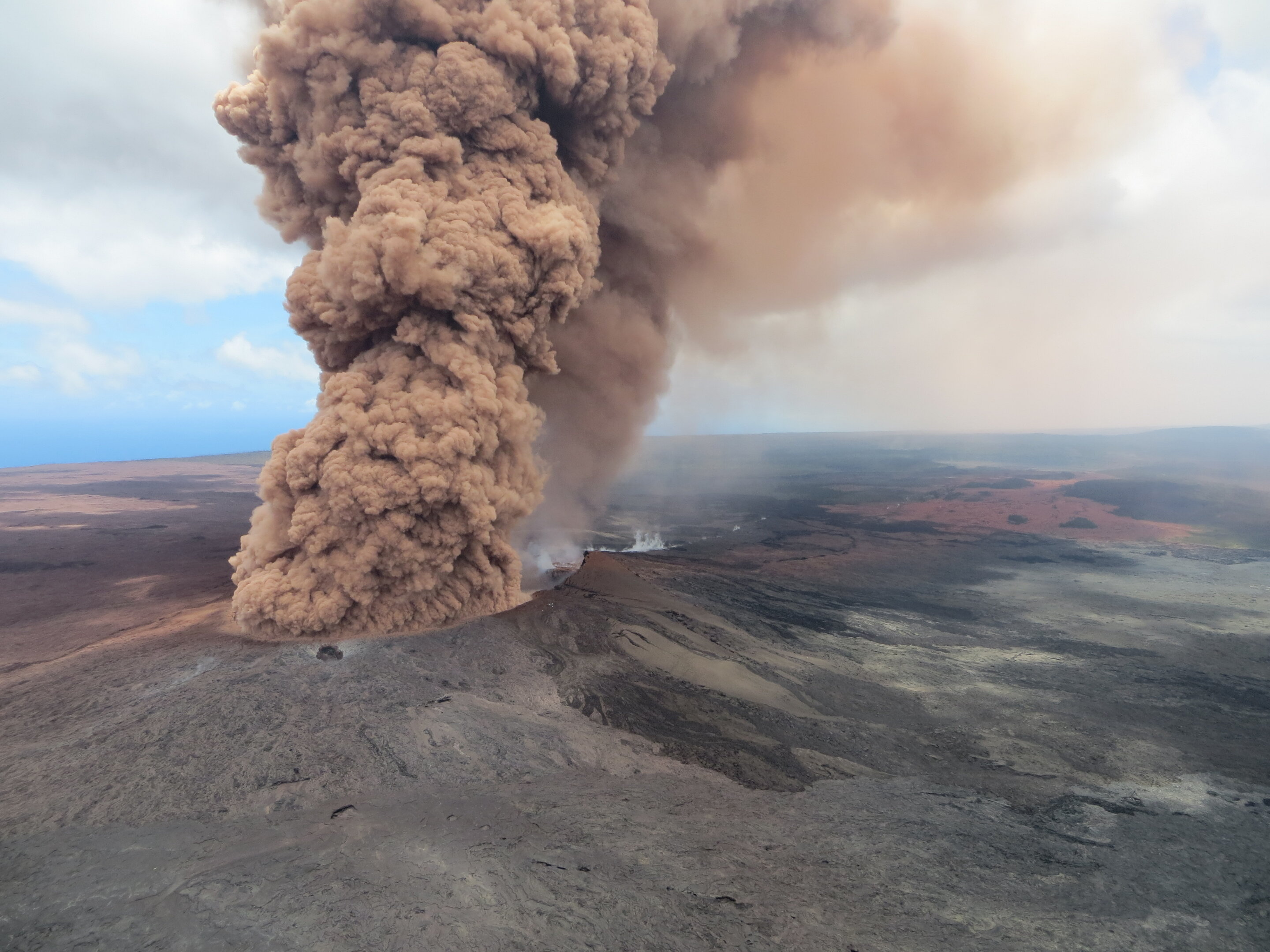A volcanic eruption in 2018 responsible for an explosion of life 🌋
Follow us on Google News (click on ☆)
In May 2018, Kīlauea spewed an ash plume up to five miles (8 km) high. These particles, carried by winds, eventually settled in the ocean over 1,200 miles (1,900 km) west of the volcano. Satellites tracked this dispersion, allowing scientists to trace their path.

Kīlauea's ash plume in 2018.
Credit: U.S. Geological Survey
Researchers observed a significant increase in chlorophyll in this area, indicating a phytoplankton bloom. This event, one of the largest ever recorded in the North Pacific, was attributed to the iron and other nutrients supplied by volcanic ash. These elements are essential for the growth of marine microorganisms.
The study, published in the Journal of Geophysical Research: Oceans, highlights the impact of volcanic eruptions on the ocean carbon cycle. Phytoplankton, by absorbing CO2, play a key role in climate regulation. Their proliferation can thus influence carbon exchange between the atmosphere and the ocean.
Satellite data helped correlate the ash fallout with the bloom's emergence. Researchers also used Argo floats to measure ocean conditions. These tools confirmed that the typically nutrient-poor waters had been enriched by volcanic deposits.
This discovery opens new perspectives on the interaction between volcanoes and marine ecosystems. Scientists now plan to monitor future eruptions to study their real-time effects on phytoplankton. Such an approach could improve our understanding of natural carbon sequestration mechanisms.
The international research team includes experts in oceanography and environmental sciences. Their work sheds light on the complexity of natural processes and their influence on the biosphere. The findings could also have implications for geoengineering strategies aimed at mitigating climate change.
How does volcanic ash stimulate phytoplankton growth?
Volcanic ash contains minerals and trace elements, such as iron, essential for photosynthesis. When deposited on the ocean's surface, these substances dissolve in water, becoming accessible to phytoplankton.
Iron, in particular, is often a limiting factor in ocean waters far from coasts. Its supply via ash can thus trigger rapid proliferation of these microorganisms. This phenomenon is similar to soil fertilization in agriculture.
This interaction between volcanoes and marine life shows how geological events can influence ecosystems on a large scale. It also illustrates the sensitivity of oceans to external nutrient inputs.
What is phytoplankton's role in the carbon cycle?
Phytoplankton absorb carbon dioxide (CO2) from the atmosphere during photosynthesis. This process converts CO2 into organic matter, helping reduce levels of this greenhouse gas.
When phytoplankton die, some of this organic matter sinks to the depths, sequestering carbon. This mechanism, known as the biological pump, plays a crucial role in Earth's climate regulation.
Massive phytoplankton blooms, like the one observed after Kīlauea's eruption, can therefore significantly impact the planet's carbon balance. They represent a natural process of CO2 capture and storage.